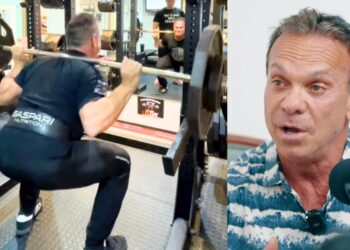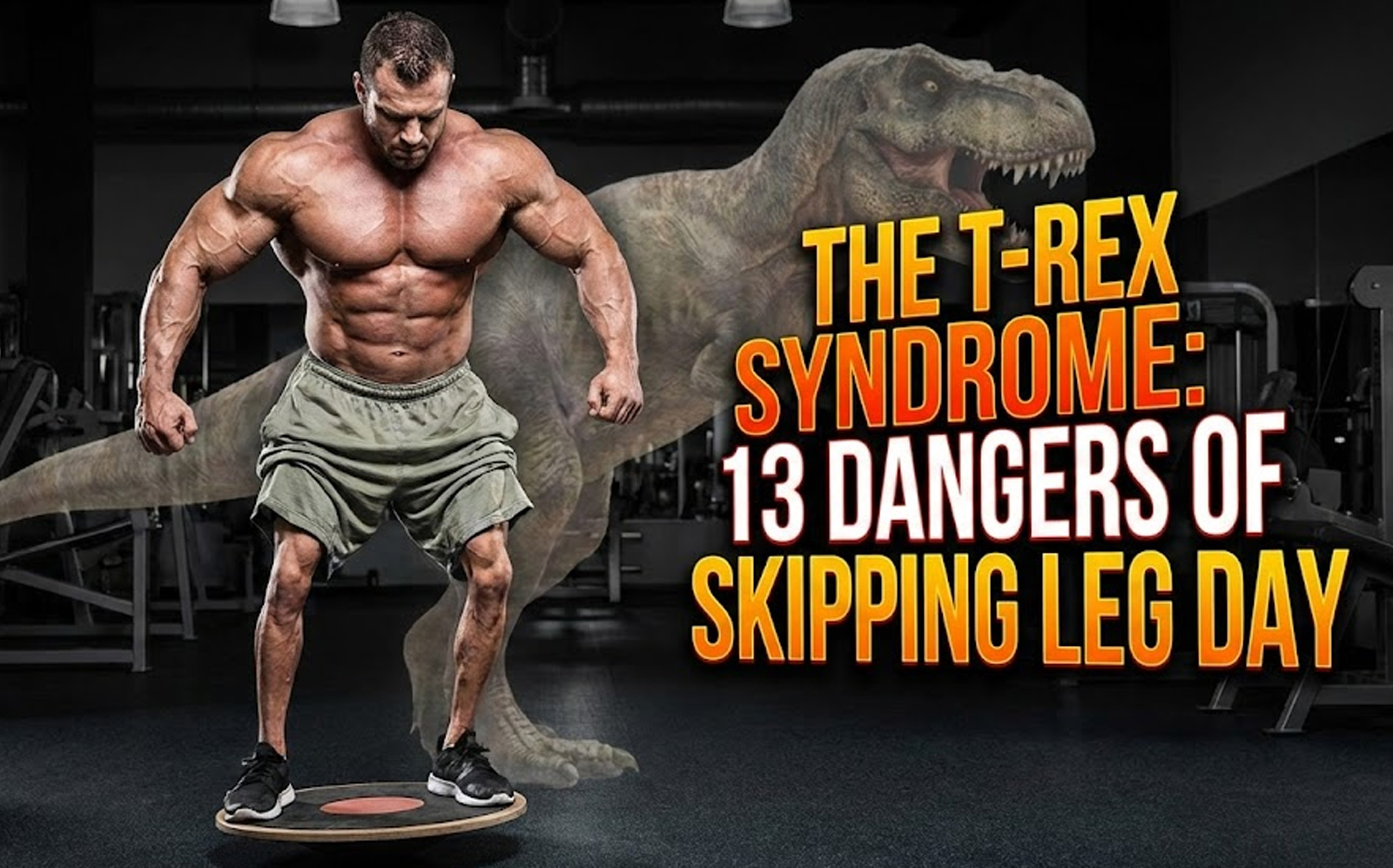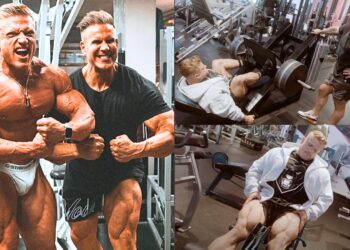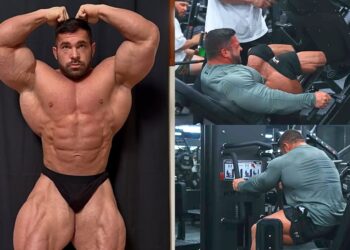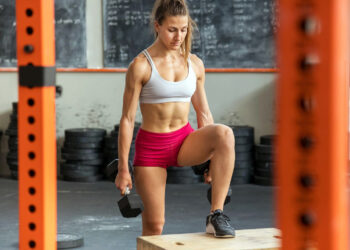No one is sure why Bulgarian split squats are called Bulgarian split squats. They don’t come from Bulgaria, and it’s not even associated with Bulgarian athletes or bodybuilders. For that reason, a lot of people call this exercise the Rear Foot Elevated Split Squat or RFESS for short.
Ultimately, it doesn’t matter what you call this exercise; it’s one of the best lower-body moves you can do.
How to do Bulgarian split squats
To get the most from this or any other exercise, it’s vital that you do it right. Here is a step-by-step guide to the correct way to do Bulgarian split squats.
- Stand with your back to a knee-high exercise bench. Bend one leg and place the top of your foot on the bench behind you. Hop forward and into a split stance.
- Bend your legs and lower your rear knee down toward the floor. Keep your lower back straight and your chest and head up. Look straight ahead. Try to keep your front shin close to vertical, and do not let your knee move beyond your toes.
- Push down through your front leg and stand back up. You should feel that about 60% of your weight is on your front leg, and about 40% is on your rear leg.
- Do the same number of reps on each leg.
If you have never done this exercise before, you may find that keeping your balance is difficult. Fix this problem by doing your Bulgarian split squats next to a wall so that, if you start to wobble, you can use your nearside arm for support. Wean yourself off the wall as your balance improves. With practice, you should soon be able to do this exercise without support.
Muscles used during Bulgarian split squats
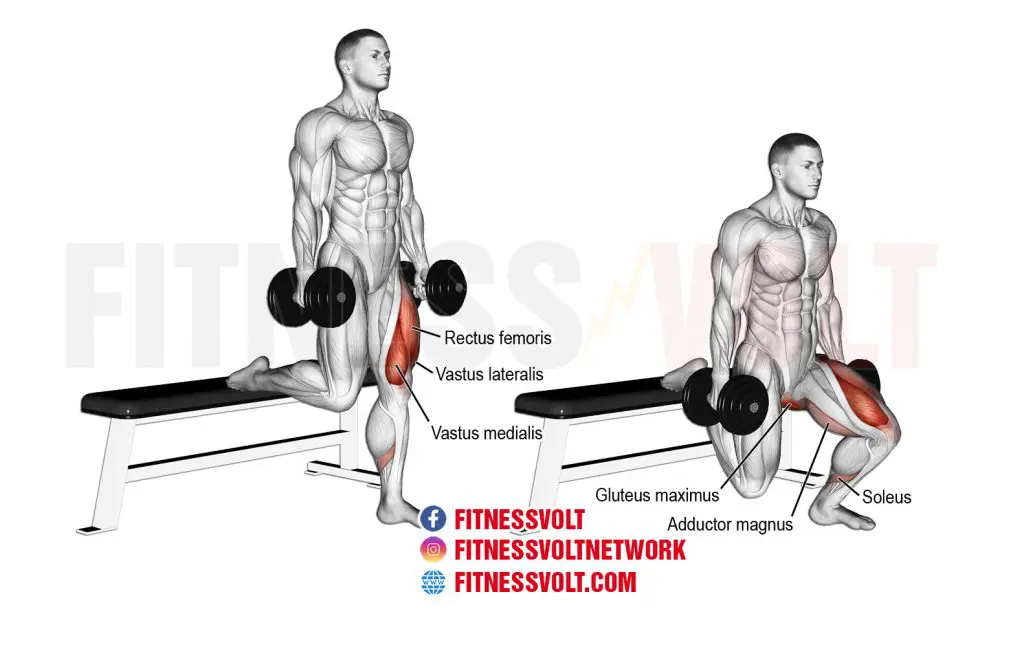
Quadriceps– quads for short, these are the muscles on the front of your thigh and are responsible for knee extension.
Level Up Your Fitness: Join our 💪 strong community in Fitness Volt Newsletter. Get daily inspiration, expert-backed workouts, nutrition tips, the latest in strength sports, and the support you need to reach your goals. Subscribe for free!
Hamstrings– located on the back of your thigh, the hamstrings are responsible for hip extension and knee flexion.
Gluteus maximus– glutes for short, and also known as your butt, this is the largest muscle in the human body. It works with your hamstrings to extend your hip.
Hip adductors– made up of adductor longus, brevis, and magnus, this group of muscles works together to draw your thigh in toward the midline of your body. In Bulgarian split squats, their main job is to keep your hips stable.
Hip abductors– these muscles are located on the outside of your hip and thigh. They are responsible for taking your thigh out and away from the midline of your body. Gluteus minimus, gluteus medius, and tensor fasciae latae (TFL) are all hip abductor muscles. Like the adductors, the hip abductors main job is keeping your hip stable. Stronger, more stable hips can help reduce the risk of developing knee pain (1).
Benefits and advantages of Bulgarian split squats
Leg presses are easier to master, and regular squats allow you to lift more weight, so why should you add Bulgarian split squats to your workouts? It turns out that this exercise has a lot of benefits to offer.
1. Increased balance
Balance is defined as your ability to keep your center of mass over your base of support. In other words, it’s your ability to avoid falling over. Balance is essential for all sports and many everyday activities. Bulgarian split squats are a semi-supported single-leg exercise, which means they will develop your balance better than bilateral or two-legged exercises.
2. Better mobility
Bulgarian split squats involve a large range of motion, especially at the hip joint. Long periods of sitting can make your hips very tight, and Bulgarian split squats can help restore lost flexibility and mobility. More mobile hips will lengthen your running stride and kicking height, improving your sports performance in the process.
If you really want to get a good stretch with this exercise, increase your range of motion by placing your front foot on a 4-6” step or block. This will allow you to descend into an even deeper position.
3. Great for your glutes
Bulgarian split squats are one of the best glute exercises around. This is partly because they involve a lot of hip flexion and extension. In addition, working one leg at a time requires you to use your glutes as stabilizers to keep your hips level. This makes them an even better butt toning and building exercise.
4. No more strength imbalances
Most people have one leg stronger than the other. However, if this imbalance gets too great, it can affect your sporting performance, your appearance, and even lead to injuries. Bulgarian split squats provide an easy way to identify any imbalances and then fix them. Simply do an extra set or two on your weaker leg to get it back up to full strength.
Level Up Your Fitness: Join our 💪 strong community in Fitness Volt Newsletter. Get daily inspiration, expert-backed workouts, nutrition tips, the latest in strength sports, and the support you need to reach your goals. Subscribe for free!
5. Less back pain
Training one leg at a time means you don’t need to use so much weight to get a good workout. Heavy barbell exercises like squats and deadlifts are great for your legs but can also be hard on your spine, involving a lot of unavoidable spinal compression. You won’t need to use as much weight with Bulgarian split squats, and that means less load on your spine.
Bulgarian split squat variations
Basic Bulgarian split squats are an excellent exercise. Still, your progress will soon plateau if that’s the only version you do. Here are five Bulgarian split squat variations you can use to make your workouts more challenging.
1. Weighted split squats
Bodyweight Bulgarian split squats are hard enough for some people but, if you want to get stronger or build muscle, you’ll need to add some extra weight to make your workout harder.
Ways to do this include:
- Weighted vest
- Dumbbells
- Barbell
- Kettlebells
You can hold dumbbells or kettlebells down by your sides, hold one dumbbell or kettlebell in front of your chest, or rest a barbell across your upper back. You can also do Bulgarian split squats with a barbell in the front squat position.
2. 1 ½ reps Bulgarian split squats
This Bulgarian split squat variation increases time under tension. That means each rep takes longer than usual. Doing 1 ½ reps will make your workout much more intense without having to use a lot of extra weight.
How to do it:
- Set up for Bulgarian split squats as normal
- Descend as deep as you can and then only come halfway up
- Lower yourself back down again and then come all the way back up
- That’s one rep – keep going! Do the same number of reps on each leg
3. Paused Bulgarian split squats
Like 1 ½ rep Bulgarian split squats, this variation makes the exercise harder by increasing time under tension. This is an excellent option for home exercisers who do not have access to barbells, dumbbells, or kettlebells.
How to do it:
- Set up for Bulgarian split squats as normal
- Descend as deep as you can and then pause with your knee just above the floor. Hold this position for 3-10 seconds
- Stand back up and repeat
4. Plyo Bulgarian split squats
Plyo is short for plyometric, which is a type of training that involves jumping. Plyos are good for developing muscle power. Muscle power is your ability to generate lots of force in a very short time. This exercise is especially useful for athletes.
How to do it:
- Set up for Bulgarian split squats as normal
- Descend as deep as you can and then explosively extend your front leg so that your front foot leaves the floor
- Land with your front knee slightly bent to absorb the impact and then repeat. Do the same number of reps on each leg
5. Stability ball Bulgarian split squats
If you’ve already got a good sense of balance, but you want to make it even better, this is the exercise for you. Simply replace the bench with an inflatable stability ball. The ball will move, and you’ll have to work extra hard to maintain your balance and keep your rear foot in place.
This is a very advanced exercise, so only try it if you have mastered the more basic versions of Bulgarian split squats.
Wrap up
Adding Bulgarian split squats to your leg workouts can have a big impact on how you look, feel, and perform. Very few leg exercises offer so many benefits. They can be challenging to learn, especially if your balance isn’t all that great, but with practice, you’ll soon discover why this exercise is so beneficial.
References:
1. Dix, Jack; Marsh, Stephanie; Dingenen, Bart; Malliaras, Peter (2019-05). “The relationship between hip muscle strength and dynamic knee valgus in asymptomatic females: A systematic review”. Physical Therapy in Sport: Official Journal of the Association of Chartered Physiotherapists in Sports Medicine. 37: 197–209. doi:10.1016/j.ptsp.2018.05.015. ISSN 1873-1600. PMID 29859898.
https://www.ncbi.nlm.nih.gov/pubmed/29859898


